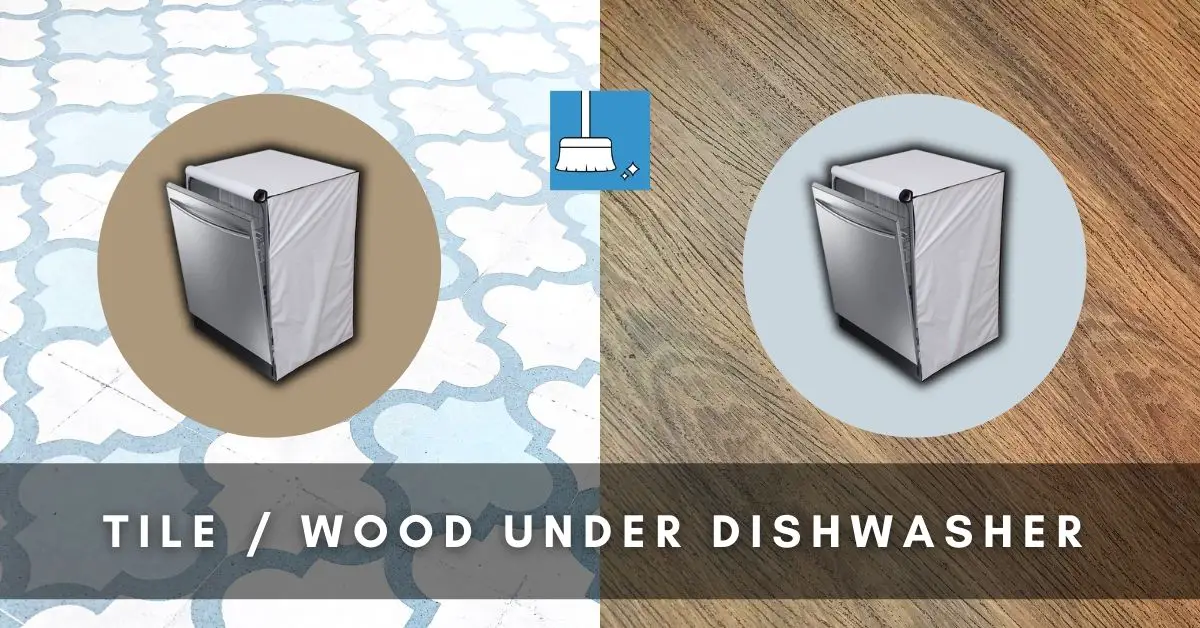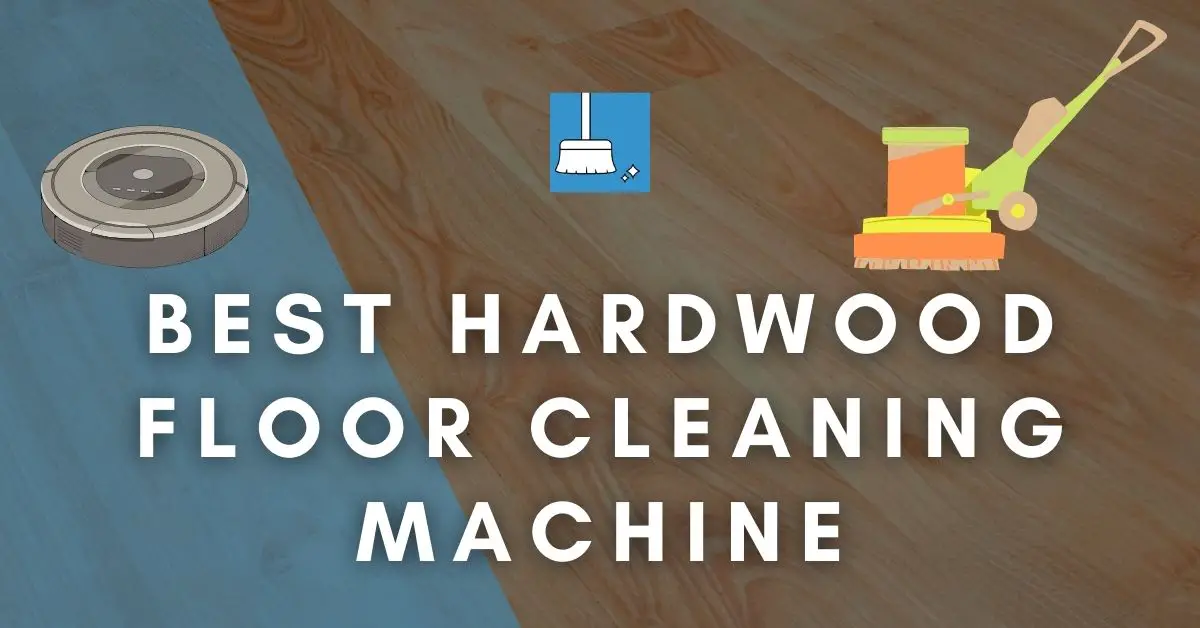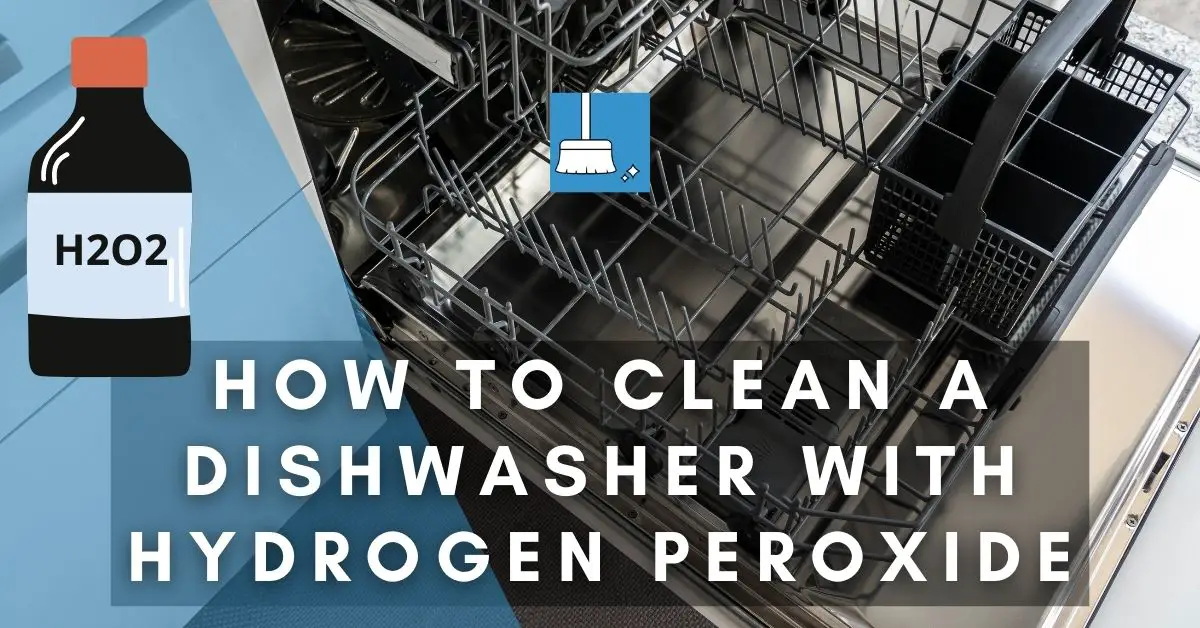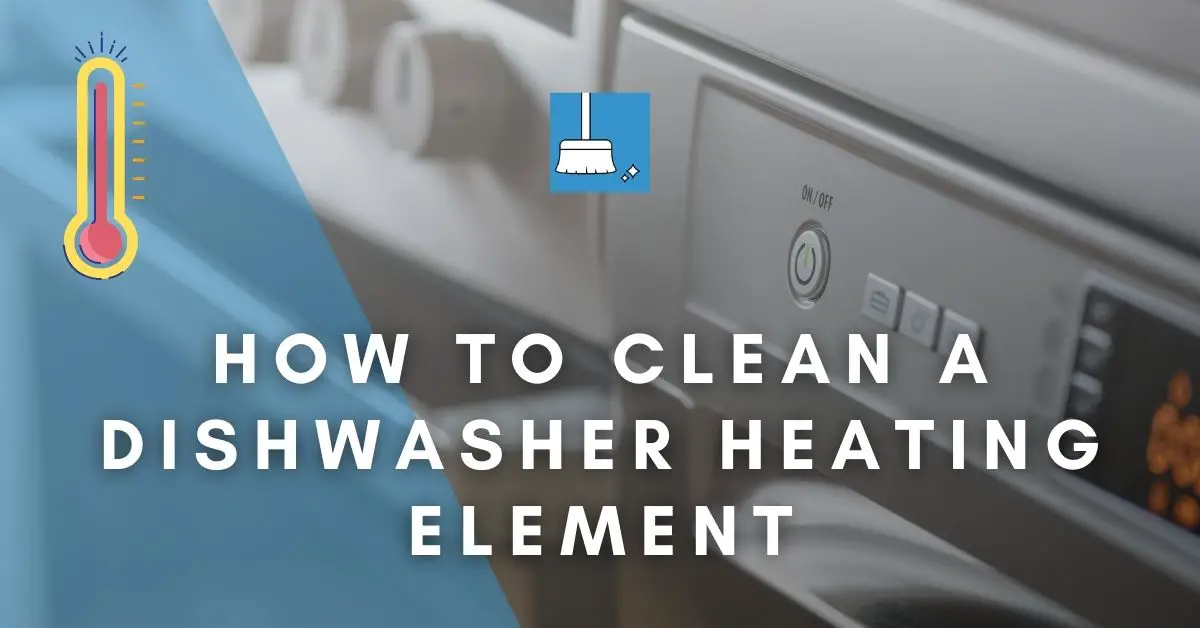We often remodel our kitchen and change the look of the floor by either installing nice-looking tiles or wood. When we install either of these, is it necessary we install them under the dishwasher too?
The dishwasher is under the countertop, in the cabinet and no one will be paying attention to what is beneath, so is this necessary?
We will be answering these questions in detail in the article, so you can be guided into doing what’s best for your dishwasher and kitchen
Tile / Hardwood under the Dishwasher!
Should I Tile under the Dishwasher?
You can tile under the dishwasher. As long as the tiles under the dishwasher are uniform with the tiles in the other parts of the kitchen, you will do fine. This will ensure you don’t have a problem taking out your dishwasher for repair or replacement.
We will talk about this in detail later in the article.
Tiles look beautiful and radiant in the kitchen so many go for it, but there are other reasons tiles are good underneath your dishwasher. Let’s look at these pros and also check some possible cons.
Pros
1- Less Stressful
When remodeling your kitchen and laying new tiles, it might seem less stressful to just leave the under-the-dishwasher area and tile the other areas of the kitchen, but it’s not.
First, you run the risk of tiling the dishwasher. That will be more stressful than just tiling the whole floor.
After the floor is tiled, Getting your dishwasher out will be difficult. You could chip your tiles or damage them while struggling to get your dishwasher out.
Secondly, tiling under the dishwasher gives your floor a uniform look and prevents a vacuum in your kitchen where tiles should be.
A vacuum, like that, isn’t good for spills. Water spills can flow from your kitchen tiles and find their way there, making a pool.
2- No Scratches
If you put tiles underneath your dishwasher, it makes the dishwasher easy to move.
You can just drag the dishwasher out of the cabinet hole without worrying about scratching or damaging your flooring. Unlike other types of floors that are prone to scratches and damage.
This makes replacement and repair very easy.
3- No Water Damage
It is easy to clean water off tiles. If there’s a water leak in your dishwasher that you didn’t notice in time, it is less likely to have damaged your floor or house.
Some flooring types suffer severe damage from water leaks and you may need to replace the flooring underneath the dishwasher or the whole kitchen. It can be annoying.
It is also easy to get rid of water from tiles. All you need is a mop and bucket. Nothing special.
4- Durable
Tiles last for many years. Sometimes people change them not because they are damaged but to change the decor and visual of their homes. You need this for your dishwasher.
You don’t want flooring that needs to be replaced now and then because it would mean moving your dishwasher every time. And this can cause damage to your dishwasher.
Putting tiles under the dishwasher ensures you only move your dishwasher when necessary.
Tiles also do not crack or break under the dishwasher.
Cons
1- Expensive
Tiling under the dishwasher instead of just tiling the other areas around the cabinet is an extra cost.
Tilers may charge extra for that space and you’ll be buying more tiles and other materials for that place.
Leaving it as it is and tiling the remaining part of the kitchen seems better since no one will be seeing that area anyway.
2- Stressful
Tiling under the dishwasher means you will have to call a plumber or/and an electrician to disconnect your dishwasher. This takes time, and energy and also means extra cost.
If you can do it yourself, it saves cost but the time and energy required can be spent somewhere else.
3- Insufficient Space
When you tile under your dishwasher, the dishwasher can become too tall for that space.
Dishwashers often come with adjustable feet but if the tiles are high or the space under your countertop was just the exact needed room for the dishwasher, adjusting the feet won’t make a difference.
The lowest setting may still be too tall. So you must check for this before tiling, or just leave it as it is.
How to Tile under the Dishwasher?
1- Disconnect the Dishwasher
If you are doing some remodeling in your kitchen and want to retile, disconnect the dishwasher first and put it somewhere safe before tiling.
If your dishwasher is wired into the wall instead of using a power cord, you may need an electrician to disconnect it for you.
You also need to disconnect it from the water source and drain-source. Turn off the power before doing this. It’s very important.
2- Move the Dishwasher
Don’t tile the kitchen first, hoping to tile under the dishwasher later. Your dishwasher could get tiled in and it would be almost impossible to repair or replace.
Tiling under it will also become impossible. You may have to cut it into two or cut the legs before you can get it out. It’s a lot of trouble.
So pull it out and tile the whole kitchen at once so it can have the same thickness.
3- Consider Added Height
Ensure there’s enough space for tiling under the dishwasher. Do some measurements.
If your dishwasher is a tall one even at the lowest feet, and it fits under the countertop perfectly before tiling, then tiling is not possible. If you tile that gap, your dishwasher can’t go back in.
The solution is to either get a smaller dishwasher or forget about tiling your kitchen. Because if you tile the kitchen, your dishwasher isn’t coming out again.
If you have no intention of taking out the dishwasher until replacement, you can go ahead to tile. But it’s not a good choice.
Better Alternatives for Filling the Gap under the Dishwasher
If tiling under your dishwasher is too expensive or you just don’t want to go for it, there are alternatives. This ensures your dishwasher isn’t tiled in and it’s not difficult to move.
1- Cement Board
This is perfect for your dishwasher because it is waterproof and does not deteriorate easily even when exposed to water for a long time. It is strong and durable, cheaper than tiles, and also easier to install.
2- Plywood
There are many types but marine plywood is more resistant to moisture and stronger. It will last years under your dishwasher, especially if there’s no leak.
This is a good alternative to tiles and can be installed yourself.
Does Hardwood Go under Dishwashers?
Yes, it does but it’s not advisable. If you barely use your dishwasher or it’s a new one properly installed, you can go for it. But it’s not the best choice for dishwashers.
There are no advantages or pros to installing hardwood under your dishwasher. Although it makes sure there’s no lip after installing the hardwood in your kitchen, so you don’t have trouble getting the dishwasher out.
But there are alternatives you can put under the dishwasher to level it up to the height of the hardwood in the kitchen.
Let’s look at a few reasons you shouldn’t put hardwood under your dishwasher.
Cons
1- Water Damage
When your dishwasher leaks, it can take a while before you notice. This water gets soaked into your hardwood and spreads to other parts of the kitchen causing severe damage.
This can be so bad that you would need to replace the whole kitchen floor.
Mold and mildew could develop all over the floor which is dangerous to your health.
2- Expensive
Hardwood is sometimes more expensive than other flooring types. Buying and installing it under your dishwasher isn’t a necessary expense since there are other materials you can use to level up the dishwasher.
You can install cheap tiles under the dishwasher since no one will be seeing that space.
3- Scratches
You may need to pull out your dishwasher and put it back more often than you think. This can damage the hardwood floor under it because hardwood is prone to scratches.
Scratches can also occur when the dishwasher is working; the vibrations and shock may move or shift the dishwasher.
So it is better to go for a different floor that will accommodate this without a problem.
How to Protect the Wood Floor under the Dishwasher?
1- Prevent water damage: Proper installation is very important. Ensure you use the original hose for the water inlet and do good plumbing work.
If you have no experience, you should hire a professional instead of doing it yourself. Install a safety valve to turn the water on and off in time and take the necessary steps to ensure you don’t have to worry about a leak.
You can use leak pan trays under the dishwasher to waterproof the hardwood under your dishwasher to some extent.
2- Plywood: You can put plywood on your hardwood floor before putting your dishwasher on it if there’s space for that.
This ensures that your hardwood is safe from scratches when you move the appliance or when the dishwasher is working.
3- Routine Checks: Constantly check for water leakage in your dishwasher. You can do this once in a few weeks or months.
This ensures that you notice any water leakage in time, clean it up immediately before it causes damage, and fix the problem before another run of the dishwasher.
4- Moisture Sensors: You could install moisture sensors on the dishwasher that will trigger the shut-off valve when there’s a leak.
This protects your hardwood from water damage but it may be expensive to install depending on the type and manufacturer.
Final Thoughts!
Tiling under your dishwasher or not tiling has its pros and cons which we listed and explained in the article in detail. This makes your decision on what to choose easier.
Hardwood under the dishwasher is a little different because it has no advantages. Dishwashers work with water and there’s a chance of a leak that you won’t notice in time. This is bad for wood.
To prevent your dishwasher from being boxed in, there are alternatives to tiles and wood that you can put under your dishwasher. We listed and explained this in detail in the article. This means you can tile or install hardwood in your kitchen without bothering about the dishwasher.





